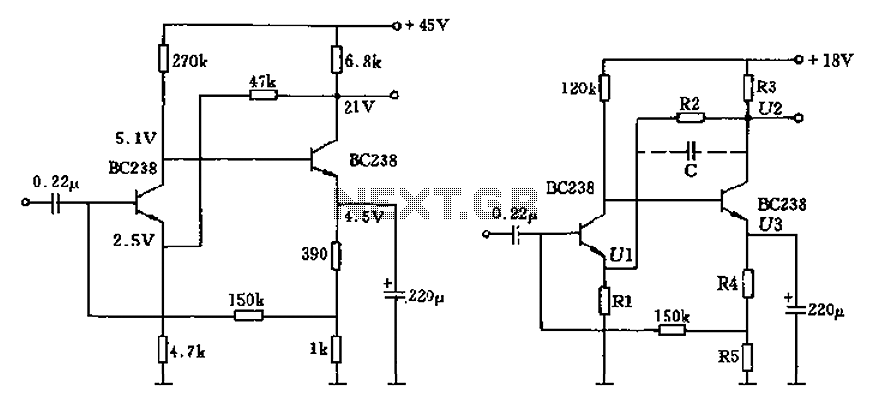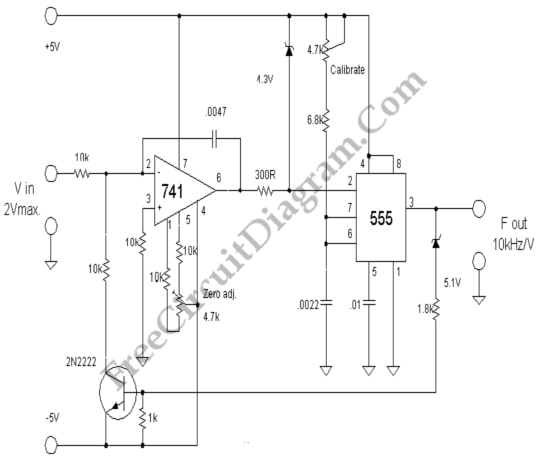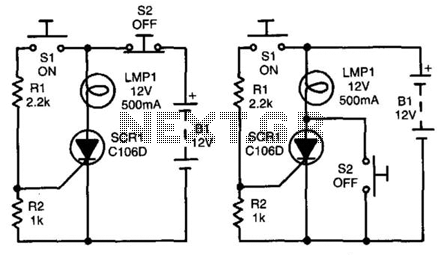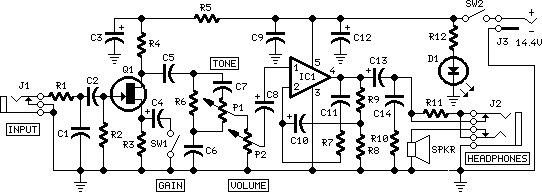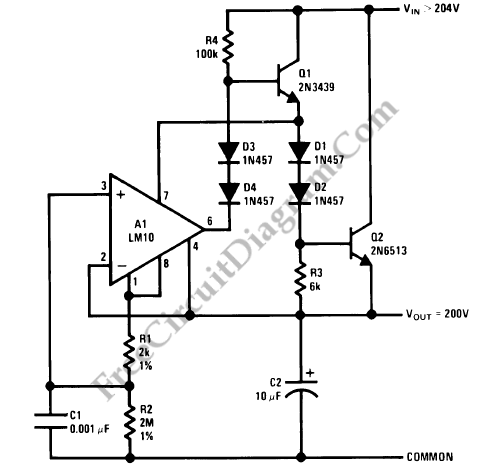
Variable Gain Amplifier controlled by voltage
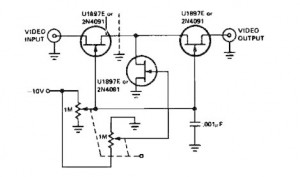
A variable gain amplifier controlled by voltage, functioning as a video amplifier. It utilizes three Field Effect Transistors (FETs) of type U1897E, which can be substituted with 2N4091.
The described variable gain amplifier is designed to adjust its gain based on an input control voltage, making it suitable for applications such as video signal amplification where dynamic range and signal integrity are crucial. The amplifier employs three FETs of type U1897E. These transistors are known for their high input impedance and low noise characteristics, which are essential for maintaining the quality of video signals.
In this configuration, the gain can be adjusted by varying the control voltage applied to the gate terminals of the FETs. This allows for precise control over the amplification level, accommodating different input signal amplitudes while minimizing distortion. The U1897E FETs are capable of handling a range of frequencies, making them ideal for video applications.
For flexibility in design, the U1897E can be replaced with the 2N4091 FET, which offers similar electrical characteristics. This substitution allows designers to source components based on availability or cost considerations without significantly impacting the performance of the amplifier.
The circuit typically includes biasing resistors to set the operating point of the FETs, coupling capacitors to block DC offsets while allowing AC signals to pass, and feedback components to stabilize the gain. The output stage may also incorporate additional filtering to ensure that the amplified signal is clean and free from unwanted noise or artifacts.
Overall, this variable gain amplifier is an effective solution for applications requiring adjustable amplification, particularly in video processing systems where signal fidelity is paramount.Variable Gain Amplifier controlled by voltage, works as video amplifier. It use 3 Field Effect Transistor (FET) type U1897E. U1897E can be replaced with 2N4091 🔗 External reference
The described variable gain amplifier is designed to adjust its gain based on an input control voltage, making it suitable for applications such as video signal amplification where dynamic range and signal integrity are crucial. The amplifier employs three FETs of type U1897E. These transistors are known for their high input impedance and low noise characteristics, which are essential for maintaining the quality of video signals.
In this configuration, the gain can be adjusted by varying the control voltage applied to the gate terminals of the FETs. This allows for precise control over the amplification level, accommodating different input signal amplitudes while minimizing distortion. The U1897E FETs are capable of handling a range of frequencies, making them ideal for video applications.
For flexibility in design, the U1897E can be replaced with the 2N4091 FET, which offers similar electrical characteristics. This substitution allows designers to source components based on availability or cost considerations without significantly impacting the performance of the amplifier.
The circuit typically includes biasing resistors to set the operating point of the FETs, coupling capacitors to block DC offsets while allowing AC signals to pass, and feedback components to stabilize the gain. The output stage may also incorporate additional filtering to ensure that the amplified signal is clean and free from unwanted noise or artifacts.
Overall, this variable gain amplifier is an effective solution for applications requiring adjustable amplification, particularly in video processing systems where signal fidelity is paramount.Variable Gain Amplifier controlled by voltage, works as video amplifier. It use 3 Field Effect Transistor (FET) type U1897E. U1897E can be replaced with 2N4091 🔗 External reference
Warning: include(partials/cookie-banner.php): Failed to open stream: Permission denied in /var/www/html/nextgr/view-circuit.php on line 713
Warning: include(): Failed opening 'partials/cookie-banner.php' for inclusion (include_path='.:/usr/share/php') in /var/www/html/nextgr/view-circuit.php on line 713
